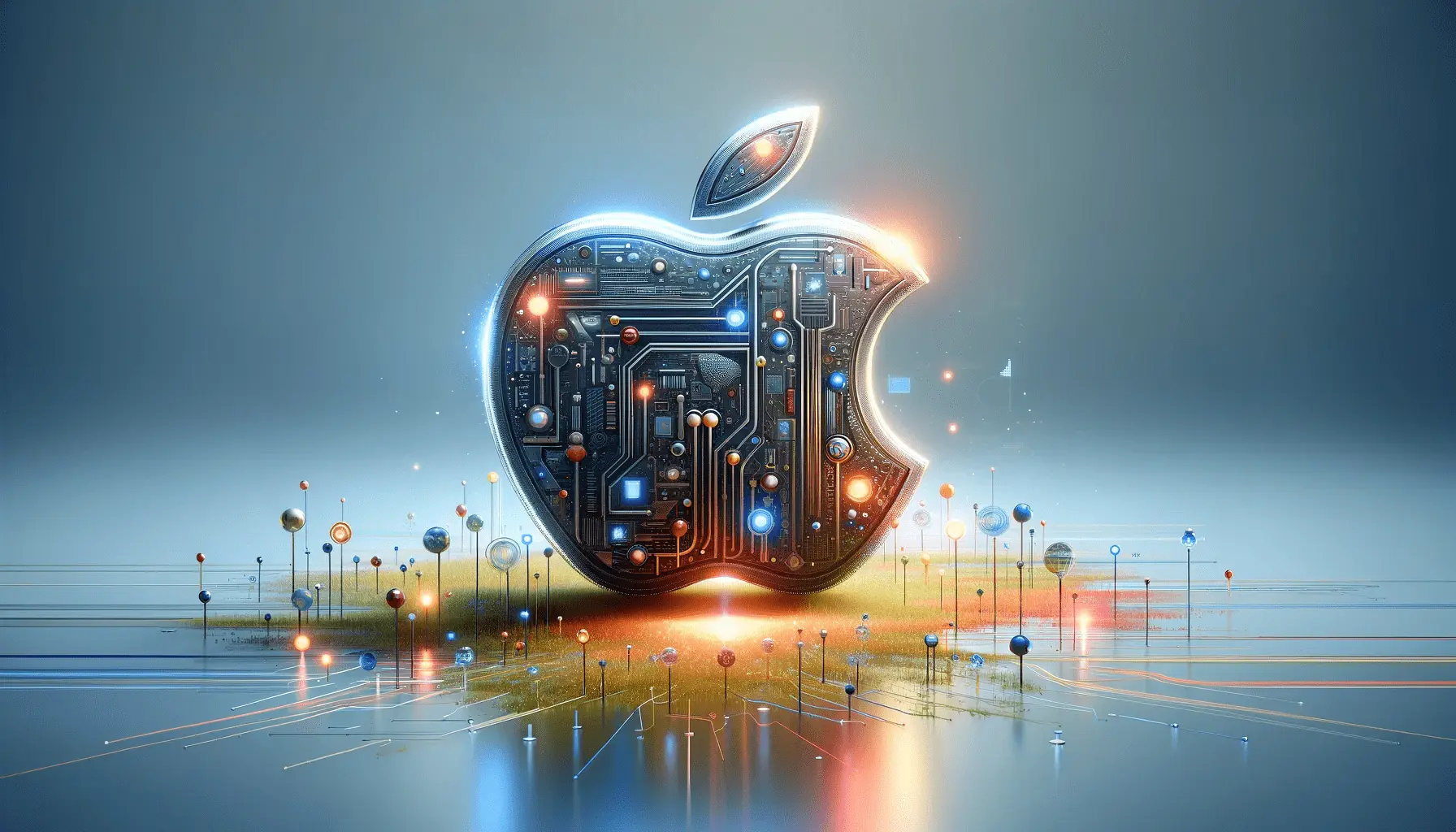As we step into 2024, the digital marketing landscape is undergoing a transformative shift towards hyper-personalization, a strategy that has become paramount for businesses aiming to stand out in a saturated market.
Hyper-personalization, as a concept, transcends the traditional boundaries of personalized marketing by leveraging cutting-edge technology and data analytics to deliver uniquely tailored experiences to each customer.
This approach not only enhances customer engagement but also significantly boosts conversion rates and customer loyalty, setting a new standard for marketing excellence.
The essence of hyper-personalization lies in its ability to analyze vast amounts of data in real-time, including browsing behavior, purchase history, and even social media interactions.
By doing so, businesses can anticipate customer needs and preferences with unprecedented accuracy, crafting marketing messages and product recommendations that resonate on a deeply personal level.
This level of customization is achieved through the integration of artificial intelligence (AI), machine learning, and big data analytics, marking a pivotal moment in how companies interact with their consumers.
- Understanding Hyper-Personalization
- Technological Foundations of Hyper-Personalization
- Strategies for Implementing Hyper-Personalization
- Challenges and Solutions in Hyper-Personalization
- Customer Experience and Engagement Through Hyper-Personalization
- Future Trends in Hyper-Personalization
- Maximizing ROI with Hyper-Personalization
- Conclusion: The Transformative Power of Hyper-Personalization in 2024
- Hyper-Personalization in 2024: FAQs
Understanding Hyper-Personalization
Hyper-personalization represents the zenith of targeted marketing, where every communication is meticulously crafted to meet the individual needs of each recipient.
This strategy relies heavily on the collection and analysis of detailed customer data, which is then used to predict future behavior and preferences.
The sophistication of AI algorithms allows for this data to be processed and acted upon in real-time, enabling businesses to deliver personalized content across various channels seamlessly.
The impact of hyper-personalization extends beyond mere customer satisfaction; it fosters a sense of value and appreciation among consumers, leading to stronger brand loyalty and advocacy.
In an era where consumers are bombarded with generic advertising messages, the ability to stand out through personalized interactions is invaluable.
Companies that master hyper-personalization can expect to see significant growth in customer engagement and retention, as well as an increase in overall revenue.
Key Components of Hyper-Personalization
At the core of hyper-personalization are several critical components that enable its success.
First and foremost is data, the lifeblood of any personalized marketing strategy.
This includes not only demographic and transactional data but also more nuanced information such as device usage patterns, interaction times, and content preferences.
The second component is technology, specifically AI and machine learning, which analyzes this data to identify trends, predict behaviors, and automate personalized content delivery.
Another essential element is the integration of various marketing channels, from email and social media to web and mobile apps.
This omnichannel approach ensures that personalized experiences are consistent and cohesive, regardless of how or where a customer chooses to interact with a brand.
Finally, real-time responsiveness is crucial, as it allows businesses to adapt their messaging based on immediate customer actions or changes in preference, ensuring that each interaction is as relevant and impactful as possible.
The success of hyper-personalization hinges on the strategic integration of data, technology, omnichannel marketing, and real-time responsiveness, creating a marketing approach that is both dynamic and customer-centric.
Technological Foundations of Hyper-Personalization
The technological advancements that have paved the way for hyper-personalization are nothing short of revolutionary.
At the forefront of this revolution are artificial intelligence (AI) and machine learning, which have transformed the way businesses understand and interact with their customers.
These technologies enable the processing of large datasets to identify patterns, predict customer behavior, and automate personalized content delivery, making hyper-personalization not just a possibility but a reality in today’s digital age.
Moreover, the integration of big data analytics has allowed for a more nuanced understanding of customer preferences and behaviors.
By analyzing data from various sources, businesses can create a comprehensive profile of each customer, leading to more accurate and effective personalization strategies.
This level of insight is critical for tailoring experiences that resonate on an individual level, thereby enhancing customer engagement and loyalty.
Key Technologies Enabling Hyper-Personalization
- Artificial Intelligence (AI): AI powers the predictive analytics that underpin hyper-personalization, enabling businesses to forecast future customer behaviors and preferences with remarkable accuracy.
- Machine Learning: Through machine learning, systems continuously learn and improve from each interaction, ensuring that personalized content becomes more accurate and relevant over time.
- Big Data Analytics: The ability to process and analyze vast amounts of data in real time is crucial for understanding customer behaviors and tailoring personalized experiences.
- Cloud Computing: Cloud platforms provide the necessary infrastructure for storing and managing the massive datasets required for hyper-personalization, ensuring scalability and accessibility.
- Internet of Things (IoT): IoT devices offer new touchpoints for collecting customer data, providing insights into user habits and preferences even in offline environments.
These technologies collectively form the backbone of hyper-personalization, enabling businesses to deliver personalized experiences at scale.
By leveraging AI, machine learning, and big data analytics, companies can create a dynamic and responsive marketing strategy that adapts to the needs of each customer in real time.
This not only enhances the customer experience but also drives significant business growth through increased engagement and loyalty.
The integration of AI, machine learning, big data analytics, cloud computing, and IoT is essential for the successful implementation of hyper-personalization strategies, providing a technological foundation that supports dynamic and personalized customer interactions.
Strategies for Implementing Hyper-Personalization
Implementing hyper-personalization requires a strategic approach that encompasses various aspects of marketing and customer interaction.
The goal is to leverage technology and data to create a seamless, personalized experience for each customer.
This involves several key strategies, each designed to enhance the effectiveness of personalized marketing efforts and ensure that they resonate with the target audience on a personal level.
To successfully implement hyper-personalization, businesses must first establish a robust data collection and analysis framework.
This framework should be capable of capturing a wide range of customer data points, from basic demographic information to more complex behavioral and interaction data.
The next step involves integrating this data with advanced AI and machine learning technologies to generate actionable insights and predictive models that can guide personalized content creation and delivery.
Effective Hyper-Personalization Strategies
- Data-Driven Customer Insights: Collect and analyze comprehensive customer data to understand preferences, behaviors, and needs. This data forms the foundation of any hyper-personalization strategy.
- AI and Machine Learning Integration: Utilize AI and machine learning algorithms to process customer data, predict behaviors, and automate personalized content delivery across channels.
- Omnichannel Personalization: Ensure consistent and personalized customer experiences across all touchpoints, including email, web, social media, and mobile apps.
- Real-Time Interaction Management: Implement technologies that allow for real-time adjustments to marketing messages based on customer actions or changes in preferences.
- Personalized Content Creation: Develop content that speaks directly to individual customer interests, needs, and behaviors, making each interaction feel unique and valued.
- Customer Journey Optimization: Map out the customer journey for different segments and tailor interactions at each stage to enhance engagement and conversion.
By adopting these strategies, businesses can move beyond generic marketing approaches and embrace a more customer-centric model.
Hyper-personalization not only improves the customer experience but also drives higher engagement rates, increased loyalty, and ultimately, greater revenue growth.
The key to success lies in the seamless integration of data, technology, and content, ensuring that every customer interaction is personalized, relevant, and timely.
Adopting a holistic approach to hyper-personalization, encompassing data analysis, technology integration, and content customization, is essential for creating deeply personalized and engaging customer experiences.
Challenges and Solutions in Hyper-Personalization
While hyper-personalization offers a myriad of benefits, implementing it is not without its challenges.
These obstacles range from technical hurdles to ethical concerns, each requiring careful consideration and strategic planning to overcome.
Recognizing these challenges is the first step towards developing effective solutions that ensure the successful deployment of hyper-personalization strategies.
One of the primary challenges is managing the sheer volume and variety of data required for hyper-personalization.
This includes not only collecting and storing this data but also ensuring its quality and relevance.
Additionally, privacy concerns and regulatory compliance present significant hurdles, as businesses must navigate a complex landscape of data protection laws while maintaining customer trust.
Overcoming Hyper-Personalization Challenges
- Data Management and Integration: Implement robust data management systems and processes to ensure the accurate collection, storage, and analysis of customer data. Utilize data integration tools to consolidate data from various sources into a unified customer view.
- Privacy and Compliance: Develop clear privacy policies and ensure compliance with data protection regulations such as GDPR and CCPA. Employ transparent data collection practices and provide customers with control over their data.
- Technology Adoption and Integration: Invest in the right technology stack, including AI, machine learning, and data analytics platforms, to support hyper-personalization efforts. Ensure seamless integration of these technologies across all marketing channels.
- Personalization at Scale: Leverage automation and AI to deliver personalized experiences at scale, without compromising the individualized nature of interactions. This includes automating content creation and delivery based on customer data and preferences.
- Measuring Effectiveness: Establish key performance indicators (KPIs) and metrics to measure the impact of hyper-personalization on customer engagement, conversion rates, and overall business performance. Use these insights to continuously refine and optimize strategies.
Addressing these challenges requires a combination of strategic foresight, technological investment, and a commitment to customer-centric practices.
By implementing comprehensive solutions that tackle these issues head-on, businesses can unlock the full potential of hyper-personalization, driving significant improvements in customer satisfaction, loyalty, and revenue growth.
Effective data management, adherence to privacy regulations, and the strategic use of technology are crucial for overcoming the challenges associated with hyper-personalization, ensuring its successful implementation.
Customer Experience and Engagement Through Hyper-Personalization
Hyper-personalization significantly enhances the customer experience and engagement by delivering content and interactions that are uniquely relevant to each individual.
This tailored approach fosters a deeper connection between customers and brands, transforming the customer journey into a more engaging and satisfying experience.
By recognizing and addressing the unique needs and preferences of each customer, businesses can create a sense of value and appreciation that drives loyalty and advocacy.
The impact of hyper-personalization on customer experience is profound.
Customers are more likely to engage with brands that understand their specific needs and preferences, leading to higher satisfaction rates and increased customer retention.
Furthermore, personalized experiences can lead to more effective upselling and cross-selling opportunities, as recommendations are based on the individual’s past behavior and preferences, increasing the likelihood of conversion.
Enhancing Customer Experience with Hyper-Personalization
- Personalized Recommendations: Use customer data to provide personalized product or service recommendations, making shopping experiences more relevant and efficient.
- Customized Communication: Tailor marketing messages and communication based on the customer’s preferences, behavior, and interaction history, enhancing the relevance and impact of each message.
- Dynamic Content: Adjust website or app content in real-time based on user behavior and preferences, creating a dynamic and personalized browsing experience.
- Customer Journey Optimization: Map and understand the customer journey for different segments, personalizing interactions at each stage to improve engagement and conversion rates.
- Feedback and Adaptation: Collect and act on customer feedback to continuously refine and improve the personalized experience, showing customers that their opinions are valued and taken into consideration.
Through these strategies, hyper-personalization not only improves the customer experience but also significantly boosts engagement levels.
Customers feel recognized and valued, which in turn fosters a positive perception of the brand and encourages ongoing engagement.
In the competitive landscape of 2024, the ability to deliver such personalized experiences is a key differentiator for businesses looking to build strong, lasting relationships with their customers.
Hyper-personalization elevates the customer experience by ensuring that every interaction is tailored to the individual’s preferences and needs, thereby enhancing engagement and fostering brand loyalty.
Future Trends in Hyper-Personalization
The future of hyper-personalization is poised to be shaped by several emerging trends that promise to further refine and enhance the way businesses interact with their customers.
As technology continues to evolve, so too will the strategies and tools available for creating deeply personalized experiences.
These advancements will not only enable more sophisticated personalization capabilities but also open up new avenues for engaging with customers on a more individual and meaningful level.
One of the most significant trends is the increasing use of AI and machine learning technologies to predict customer behavior with even greater accuracy.
This will allow businesses to anticipate needs and preferences before the customer even expresses them, creating opportunities for proactive engagement.
Additionally, the integration of voice and conversational interfaces into personalization strategies will provide more natural and intuitive ways for customers to interact with brands.
Emerging Trends Shaping Hyper-Personalization
- Advanced Predictive Analytics: Leveraging more sophisticated AI models to predict customer behaviors and preferences with unprecedented accuracy, enabling proactive personalization.
- Conversational Interfaces: Incorporating voice assistants and chatbots into personalization strategies to offer more natural and engaging customer interactions.
- Augmented Reality (AR) and Virtual Reality (VR): Using AR and VR technologies to create immersive and interactive personalized experiences, especially in retail and e-commerce.
- Blockchain for Data Security: Employing blockchain technology to enhance data security and privacy in personalization efforts, building trust with customers.
- Personalization in IoT: Harnessing the Internet of Things to gather more detailed customer data from smart devices, enabling more nuanced and context-aware personalization.
These trends indicate a future where hyper-personalization becomes even more integrated into the customer experience, leveraging new technologies to create more engaging, intuitive, and satisfying interactions.
As businesses continue to explore and adopt these emerging trends, the potential for creating truly individualized customer experiences will expand, setting new standards for customer engagement and loyalty.
The future of hyper-personalization will be driven by advancements in AI, conversational interfaces, AR/VR, blockchain, and IoT, offering unprecedented opportunities for creating deeply personalized and engaging customer experiences.
Maximizing ROI with Hyper-Personalization
Hyper-personalization is not just a strategy for enhancing customer experience; it’s also a powerful tool for driving business growth and maximizing return on investment (ROI).
By delivering more relevant, engaging, and personalized experiences, businesses can significantly improve conversion rates, increase customer loyalty, and ultimately, boost revenue.
The key to achieving these outcomes lies in the strategic implementation of hyper-personalization techniques, leveraging data, technology, and insights to create highly targeted and effective marketing campaigns.
Moreover, hyper-personalization helps businesses optimize their marketing spend by focusing efforts on the most promising leads and customers.
By understanding customer behaviors and preferences in depth, companies can allocate resources more efficiently, targeting their marketing and sales efforts where they are most likely to yield results.
This targeted approach not only improves the efficiency of marketing campaigns but also enhances the overall customer journey, leading to higher satisfaction and retention rates.
Strategies for Enhancing ROI through Hyper-Personalization
- Segmentation and Targeting: Use detailed customer data to segment audiences and tailor marketing messages and offers to specific groups, improving relevance and effectiveness.
- Behavioral Triggered Emails: Implement automated email campaigns triggered by specific customer behaviors, such as browsing a particular product category, to increase engagement and conversions.
- Dynamic Content Optimization: Continuously optimize website and app content based on user interactions and preferences, creating a more personalized and engaging online experience.
- Loyalty Programs: Design personalized loyalty programs that reward customers based on their individual purchasing behaviors and preferences, encouraging repeat business and fostering loyalty.
- Customer Feedback Loops: Incorporate customer feedback into personalization strategies to continuously refine and improve the relevance and effectiveness of marketing efforts.
By focusing on these strategies, businesses can leverage hyper-personalization to not only create more meaningful and satisfying customer experiences but also to drive significant improvements in ROI.
The ability to deliver the right message, to the right customer, at the right time, is a powerful competitive advantage in today’s market.
As businesses continue to evolve their hyper-personalization capabilities, the potential for growth and profitability will only increase, making it an essential strategy for any company looking to succeed in the digital age.
Effective hyper-personalization strategies can significantly enhance ROI by improving conversion rates, optimizing marketing spend, and increasing customer loyalty and retention.
Conclusion: The Transformative Power of Hyper-Personalization in 2024
The journey through the intricate landscape of hyper-personalization in 2024 reveals a marketing strategy that is not only transformative but also indispensable for businesses aiming to thrive in a digital-first world.
Hyper-personalization stands at the confluence of technological innovation and customer-centric marketing, offering a blueprint for creating deeply personalized, engaging, and memorable customer experiences.
As we have explored, the strategic implementation of hyper-personalization harnesses the potential of AI, machine learning, and big data analytics, setting a new benchmark for customer interaction and satisfaction.
Key Takeaways for Businesses
- Hyper-personalization is a critical driver for enhancing customer engagement and loyalty, significantly impacting a business’s bottom line.
- The integration of advanced technologies is essential for analyzing customer data and delivering personalized experiences at scale.
- Challenges such as data management, privacy concerns, and technology integration can be overcome with strategic planning and investment.
- The future of hyper-personalization promises even more sophisticated personalization capabilities, leveraging emerging trends such as conversational interfaces, AR/VR, and IoT.
- Maximizing ROI through hyper-personalization involves a combination of targeted marketing strategies, efficient resource allocation, and continuous optimization based on customer feedback.
In conclusion, hyper-personalization in 2024 is not just a trend but a fundamental shift in how businesses approach marketing and customer engagement.
By prioritizing personalized customer experiences, companies can forge stronger connections with their audience, driving engagement, loyalty, and growth.
As we look to the future, the continued evolution of hyper-personalization strategies will undoubtedly play a pivotal role in shaping the competitive landscape, offering endless possibilities for businesses ready to embrace this transformative approach.
Want your website to top Google search rankings? Leave the SEO to our professional agency!
Hyper-Personalization in 2024: FAQs
Explore the most common inquiries about hyper-personalization strategies as we move into 2024, providing insights into how businesses can leverage this approach for enhanced customer engagement and ROI.
Hyper-personalization in marketing involves using AI and data analytics to deliver highly customized content and experiences to each individual customer.
AI enables hyper-personalization by analyzing vast amounts of data to predict customer preferences and behaviors, automating personalized content delivery.
Hyper-personalization uses real-time data and AI to offer more precise and individualized experiences than traditional personalization methods.
Hyper-personalization is crucial for standing out in a saturated market by meeting the increasing customer demand for tailored experiences.
Yes, by delivering relevant and personalized experiences, hyper-personalization significantly enhances customer satisfaction and loyalty.
Data is foundational, providing the insights needed to tailor experiences to individual customer preferences and behaviors.
Businesses implement hyper-personalization by integrating AI, machine learning, and data analytics into their marketing strategies.
The main challenges include managing and analyzing large data sets, ensuring privacy and compliance, and integrating technology across platforms.











